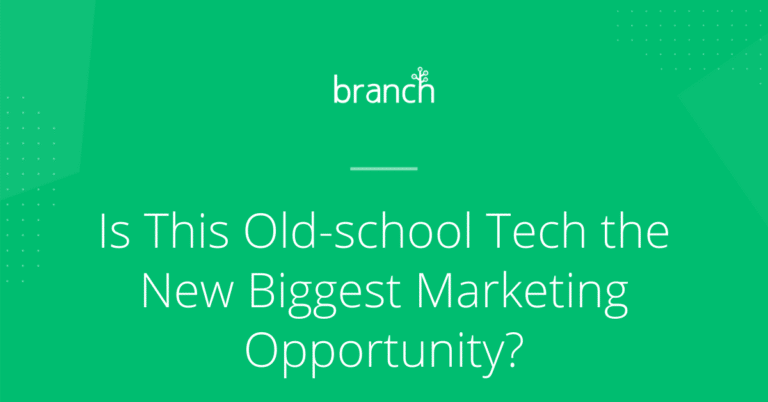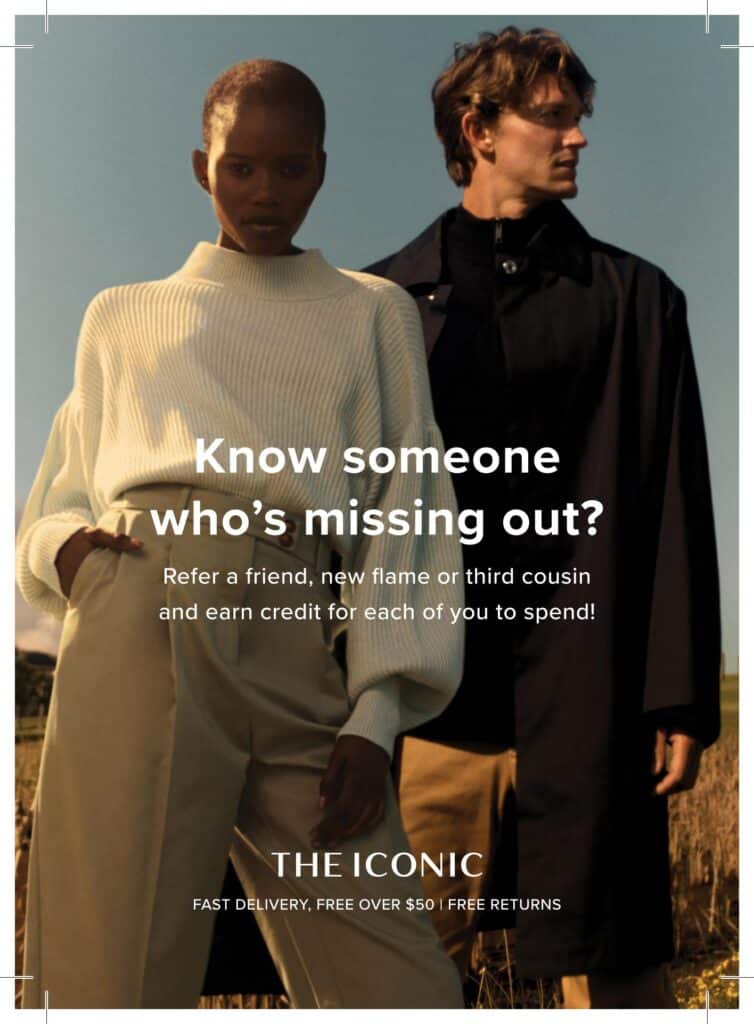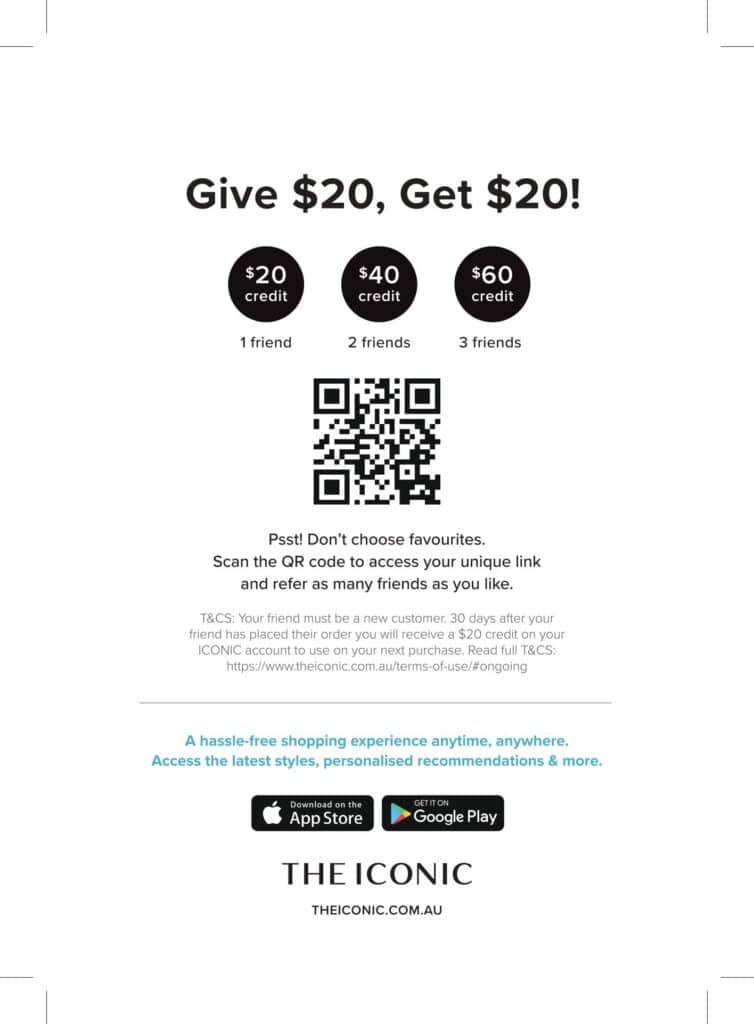Quick Response or QR codes were invented by Masahiro Hara to track automobile parts in Japan and have been around since the ’90s but have never really taken off in the west like they have in Asia-Pacific. A big reason: In the past, scanning a QR code usually meant needing to download a separate and specific app to use them. However, when Apple introduced a QR scanner directly into its camera in iOS 11, adoption of QR codes started picking up, and the once-maligned QR code is now seeing a significant increase in adoption by consumers, platforms, brands, and marketers experimenting to drive great omnichannel customer experiences.
If you walk down any high street these days and go into a cafe, bar, restaurant, or shop, you will likely see brands leveraging this monochrome old-school technology to keep people safe when adding yourself to the waiting list for a table, look at the menu, or register your details for COVID-19 track and trace measures. In particular, the restaurant and hospitality sector has been on the vanguard of adopting QR codes to survive through the pandemic and other sectors e.g. Entertainment, Retail, and Sports will likely follow with similar tactics.
And it’s not just for health and safety reasons, we are seeing QR codes used to acquire and bring consumers closer by removing friction to getting your app downloaded onto their smartphone. Compared to the same time last year (Jan to August), Branch has seen a 496% surge in QR codes being the last attributed touch. So in a nutshell 2020 is the perfect time to start or expand your usage of QR codes to drive user acquisition and improve the experience for your customers.
Read on to find out how best to start experimenting with QR codes and how Branch can help.
How Do QR Codes Work?
A Quick Response (QR) code is a two-dimensional barcode that looks a bit like a black and white Piet Mondrian grid painting that can hold more information than the normal barcodes you see on the side of a product in a shop. A standard barcode typically contains a maximum of around 20 characters whilst a QR code can contain up to 7000 characters. Depending on the size and version, a typical QR code would encode around 300 characters which is usually enough for most use cases.

Image source: https://www.qrcode.com/en/about/
One of the challenges that the original QR development team at Denso Wave faced was how to read the codes from multiple angles as fast as possible. The solution they came up with was positional elements (see image below) and design patterns that allow the QR scanner or phone camera today to read the 2D barcode at high speed.

Image Source: https://www.qrcode.com/en/history/
When you scan a QR code via your smartphone camera it first identifies the positional elements and then reads the encoded information behind the QR code, it then takes that information e.g. a link that can then navigate the user to another service such as the App Store, website, SMS, email, etc. Branch links work out of the box with QR codes, where they can deep link the user through the App Store install process, deliver personalized onboarding experiences, and attribute all downstream app events in the Branch dashboard to the originating QR code.
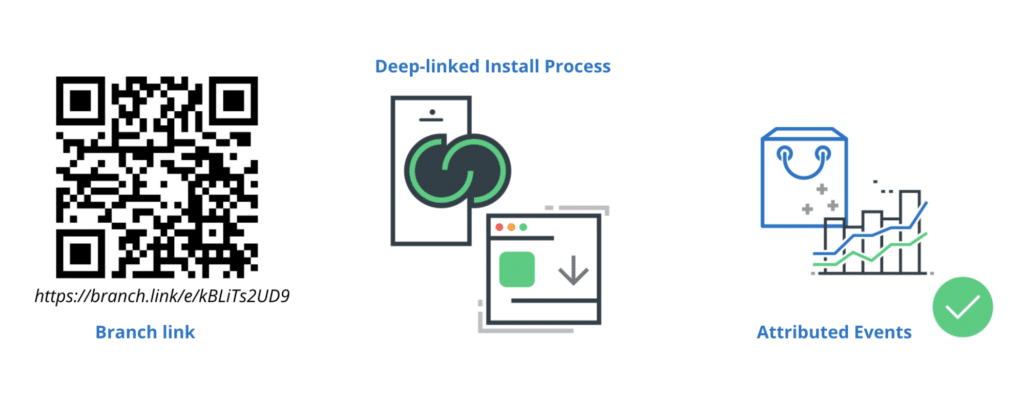
Why Have QR Codes Not Taken Off Before?
It hasn’t always been easy to use, track, or measure QR codes. Prior to iOS 11 and Android 9, there was no integrated QR scanner in smartphone cameras which limited adoption as there was friction added to the process of having to download a 3rd party scanning app. With some badly designed and poorly executed campaigns, QR codes became a strange mixture of novelty, humour, and frustration as a lot of people just didn’t know how to use them or what they were meant to do.
Other challenges faced by the marketing team was when they would print the codes out, but would need to change the links behind the codes and not be able to – this led to confusion, low adoption, and poor user experiences when they were navigated to old or outdated content or dead links. Finally, again from a marketer’s perspective, arguably the biggest issue has been the inability to measure downstream app activity and conversion events from QR code campaigns.
What Has Changed, and Why Will QR Codes Work Now?
Technically one of the biggest hurdles was removed when Apple released iOS11 which included the QR code scanner built directly into the camera app and removed the need to download a 3rd party app specifically to scan QR codes.
From a societal perspective, the 2020 pandemic has almost forced people to become more aware of and learn how easy it is to use QR codes. Good use of QR codes post lockdown is putting people at ease by allowing them a more contactless experience, to move more freely, interact with less people, whilst also not diminishing the experience and if done correctly the use of QR codes can enhance the consumer’s experience. Some interesting statistics (these statistics were estimated pre-COVID) on QR usage:
- An estimated 11 million households will scan a QR Code in 2020 in the USA alone. (Statista, 2019)
- QR Code usage will be about 10.1 million in Europe by 2020. (Beaconstac, 2019)
With these changes, more people across different geographies and demographics are now becoming more accustomed, trusting, and comfortable using QR codes and some of the mainstream apps like Snapchat with SnapCodes or Pinterest with Pincodes, have made QR (almost) cool with the Gen Zs of this world. The behaviours being learned by consumers during this time open up a world of opportunities for marketers to get creative and make a positive impact with minimal investment.
Examples of QR Codes In the Wild!
The Iconic
This Branch-powered QR code gives users a unique referral link to share with friends. The code seamlessly routes users who get the referral link into the app, making an awesome user experience!
Hungry Jacks
Placed a Branch link behind a QR code to connect desktop & app experiences. This increases downloads and cross-platform engagement.
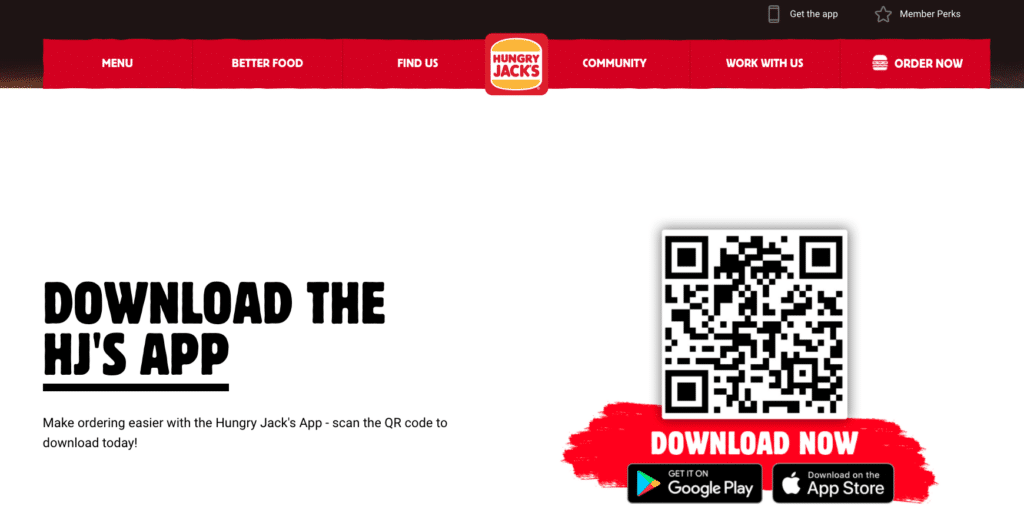
Lowe’s
A QR Code in Lowes print flyers helps bridge the user from offline into the app for a streamlined checkout or pickup experience.

Joe and the Juice
Displays barcodes on their store windows and to-go bags to encourage customers to download the app. Upon scanning the app, the user is taken to a Branch link that opens the app directly and if a user doesn’t have the app, they are taken to the app store to download the Joe and The Juice App.
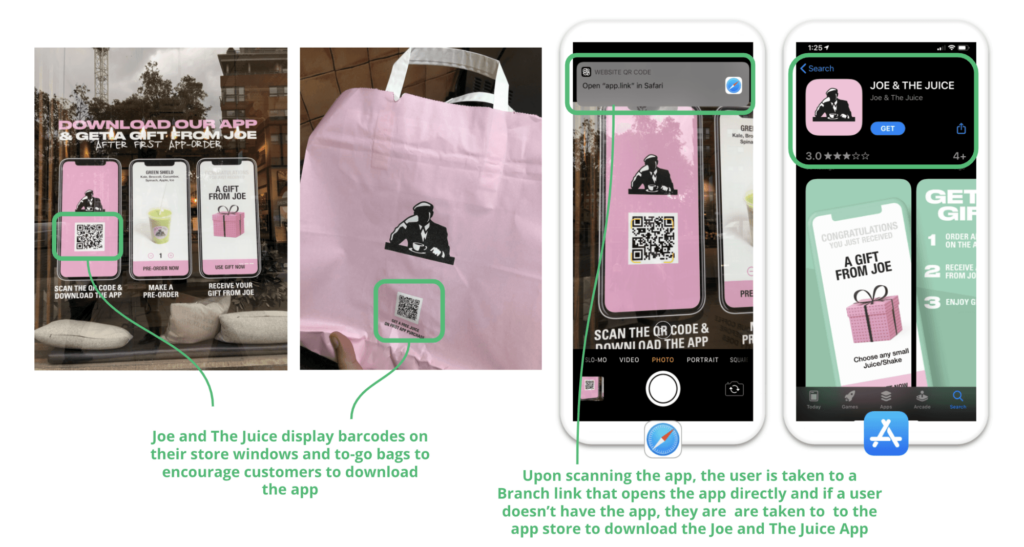
Burger King
The team at BK launched a TV ad with a QR code dancing around the screen where the viewer was invited to point and scan to get a free whopper.
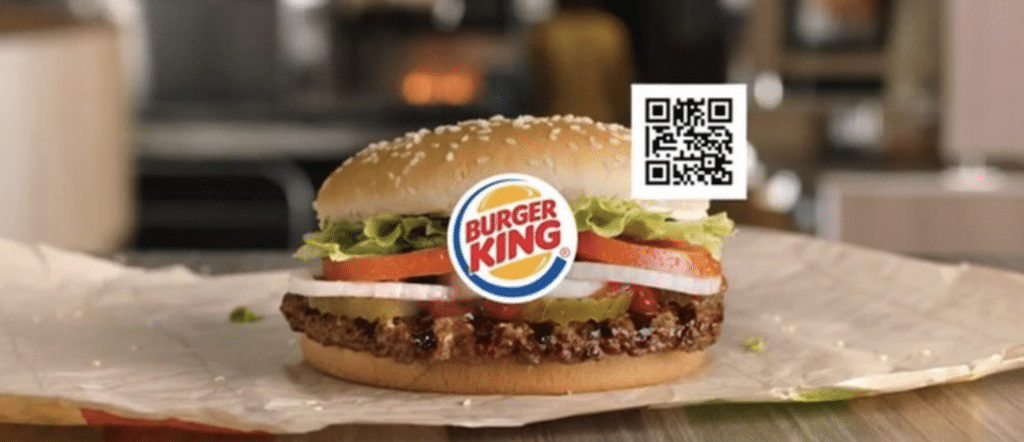
Benefits of Using QR Codes and Branch Links Together
- Seamless customer experience by bringing people back into your app from the store or curbside.
- Drive awareness, brand engagement, and loyalty programs.
- Eliminate friction along a user’s path to purchase, payment, or other conversion event.
- Ease of social sharing and virality.
- Attribution of post app install events e.g. revenue, purchases, subscriptions etc.
- Ability to track performance down to the individual QR code.
- Customizable to visually represent the brand.
- Decreased Cost of Customer Acquisition (COCA).
- Drive concurrent in-app & real-life experiences.
Best Practices
If you are thinking of using QR codes, here are a few ideas to consider:
- If you are driving app downloads with your QR code, point it to the app stores and not to your mobile website app download page. Sending people to the website is unfortunately still common but introduces extra clicks, friction, and time into the journey.
- Make the QR code big enough for people to see and scan. Include a clear call to action, with benefits of scanning or instructions if required for the audience.
- Activate bidirectional communication between the brand and the customer via a QR code that links the user directly into the in-app chat function.
- Use the QR codes in physical locations, and make sure that each location has a different code. This way you can actually differentiate between locations to see which ones drive the most app installs or in-app purchases.
- Align incentives so that in-store employees benefit from the results and effort they put into promoting the QR code behind the campaign or loyalty program. Get store employees to promote the app by running a competition between stores and offering a prize to the store that generates the most downloads or purchases.
- If you do any print advertising, try using QR codes – we believe this is perfect to deliver connected experiences.
- Use QR codes on your physical products. These can promote the specific product in the app, and can also be used for tracking purposes to see which product placements are generating more installs. With people a lot less inclined to touch physical products, you can set up the QR code to defer deep link to the product inside your app once the app is downloaded.
- Use a link/QR code generator that ensures that the link can be updated — the QR code can be expensive to print and you might change the content or the promotion associated with it. With a tool like Branch’s link generator, you can easily refresh the link behind a QR code when necessary.
- Add a QR code to your desktop app download page to make it easier for people to download your app – you will be surprised how many still link to a virtual dead end where users can’t download the app.
The End of the Beginning for QR Codes
With customers changing behaviours, QR codes being more widely adopted and understood by consumers, coupled with the ability to attribute app activities directly back to QR codes, now is the time for brands to get creative with QR codes and introduce them into considered use cases that meet their specific customers’ needs and drive real business benefits.
QR codes are the new normal and Branch links behind QR codes are quick, easy, and powerful to use, and can be effectively deployed by your team today.
For more information on QR codes speak to your Branch Customer Success Manager about use cases and best practices specific to your industry and consumer base.






















